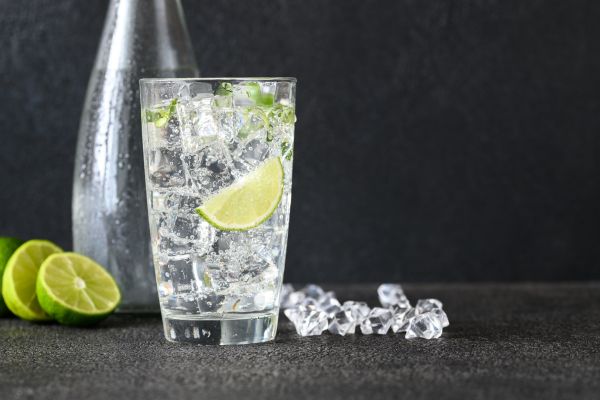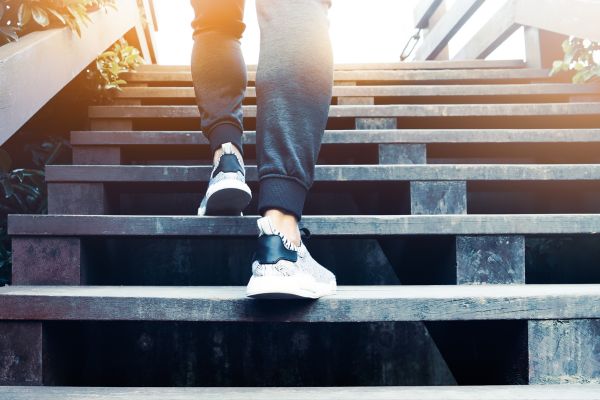Alcoholics Anonymous (AA) is a global community of individuals who have struggled with alcohol addiction. Founded in 1935, AA has helped millions of people achieve and maintain sobriety through its peer-based recovery program. AA’s principles come from their famous Twelve Step Program. In combination with the steps, the principles offer a guide for personal growth and sustained sobriety that goes beyond abstinence.
Let’s explore the twelve principles and how each helps us build habits that lead to a fulfilling life.
The History of the 12 Principles
The twelve principles of AA evolved from the original Twelve Steps, developed by AA founders Bill Wilson and Dr. Bob Smith in the 1930s. The steps were first published in the book “Alcoholics Anonymous: The Story of How More Than One Hundred Men Have Recovered from Alcoholism” in 1939, commonly known as “The Big Book.”
As the program gained traction and more people engaged with the 12 steps, members began to recognize underlying themes within each step. This led to the identification of 12 corresponding principles. These principles summarize the most important elements of each step into a core value or concept that can be applied more broadly in daily life.
Developing these principles was not a formal process but something that happened naturally in the AA community. Each principle represents the wisdom and experience of many individuals who have worked through the 12 steps and found ways to apply their teachings in everyday life.
Each Principle Explained
Principle 1: Acceptance
“We admitted we were powerless over alcohol – that our lives had become unmanageable.”
Acceptance is the foundation of recovery in AA. It involves recognizing the reality of addiction and the need for change.
In practice, acceptance might involve:
- Admitting to yourself and others that alcohol has become a problem.
- Recognizing the negative impacts of drinking on various aspects of life.
- Letting go of the illusion of control over alcohol consumption.
Acceptance means acknowledging powerlessness over alcohol and the unmanageability of life with addiction. It’s about moving past denial and facing the truth of the situation. This principle encourages individuals to stop fighting their addiction and instead accept it as a reality that needs to be addressed.
Principle 2: Hope
“Came to believe that a Power greater than ourselves could restore us to sanity.”
Hope is the belief that recovery is possible and that a better life awaits beyond addiction.
Practicing hope in recovery might include:
- Listening to success stories of others in recovery.
- Setting positive goals for the future.
- Cultivating a mindset that focuses on possibilities rather than limitations.
This principle instills optimism and the courage to pursue a future free from alcohol dependence. It motivates me to begin and continue the recovery journey, even when facing challenges.
Principle 3: Faith
“Made a decision to turn our will and our lives over to the care of God as we understood Him.”
Faith in AA doesn’t necessarily mean religious belief. It’s about trusting in a power greater than ourselves, which can be interpreted as a higher power, the AA program itself, or the knowledge the group has gained over time.
Ways to cultivate faith in recovery might include:
- Exploring spiritual or philosophical beliefs.
- Trusting in the AA program and its principles.
- Relying on the support and wisdom of the recovery community.
Faith involves surrendering control and trusting in something beyond yourself for guidance and strength. It’s about finding a source of support and direction to help navigate the recovery challenges.
Principle 4: Courage
“Made a searching and fearless moral inventory of ourselves.”
Courage is essential for facing fears, confronting past behaviors, and taking steps toward recovery.
Examples of courage in recovery include:
- Facing painful memories or emotions without turning to alcohol.
- Being honest about past mistakes and their consequences.
- Trying new, sober ways of dealing with stress and social situations.
Courage involves being willing to change and face life’s challenges without relying on alcohol. It requires bravery to look at yourself honestly and make complex changes.
Principle 5: Honesty
“Admitted to God, to ourselves, and to another human being the exact nature of our wrongs.”
Honesty is crucial in recovery. It means being truthful with yourself and others about the nature and extent of your addiction, as well as past actions and current struggles.
Practicing honesty in recovery might involve:
- Sharing openly in AA meetings about challenges and successes.
- Being truthful with loved ones about one’s addiction and recovery journey.
- Acknowledging mistakes and taking responsibility for actions.
Honesty counters the denial and secrecy that often accompany addiction and helps you become more transparent and authentic in all areas of life.
Principle 6: Willingness
“We are entirely ready to have God remove all these character defects.”
Willingness is the openness to change and try new approaches. It involves being receptive to guidance and letting go of old habits and thought patterns.
Examples of willingness in action include:
- Being open to suggestions from sponsors or counselors.
- Trying new recovery tools or techniques, even if you’re initially skeptical.
- Being ready to change long-standing behaviors or attitudes.
Willingness is about being open-minded and flexible in recovery. It means being ready to do whatever it takes to maintain sobriety and grow as a person.
Principle 7: Humility
“Humbly asked Him to remove our shortcomings.”
Humility means recognizing our limitations and the need for help. It involves setting aside pride and ego to accept support from others and a higher power.
Ways to practice humility in recovery include:
- Asking for help when needed.
- Listening to and considering others’ perspectives.
- Recognizing that recovery is a lifelong journey of growth.
Humility is about having a realistic view of yourself and acknowledging strengths and weaknesses as you navigate recovery.
Principle 8: Love
“Made a list of all persons we had harmed and became willing to make amends to them all.”
Love in AA encompasses compassion for ourselves and others. It involves developing empathy, forgiveness, and a sense of connection with fellow recovering individuals and the broader community.
Practicing love in recovery might include:
- Showing compassion to others struggling with addiction.
- Forgiving oneself and others for past hurts.
- Building and nurturing healthy relationships.
Love in recovery is about healing relationships and developing a more compassionate approach to life, including self-love and love for others.
Principle 9: Responsibility
“Made direct amends to such people wherever possible, except when to do so would injure them or others.”
Responsibility is about taking accountability for one’s actions, both past and present. It involves making amends where possible and committing to more ethical and considerate behavior.
Examples of practicing responsibility in recovery include:
- Making amends to those harmed by past actions.
- Following through on commitments in recovery and daily life.
- Taking care of physical and mental health.
Taking responsibility means owning our choices and consequences rather than blaming others or circumstances. It’s about being proactive in one’s recovery and life.
Principle 10: Discipline
“Continued to take personal inventory and when we were wrong promptly admitted it.”
Discipline is the commitment to maintaining sobriety through consistent effort. It involves developing healthy habits, attending meetings regularly, and following through on recovery-related tasks.
Ways to practice discipline in recovery might include:
- Maintaining a regular schedule of AA meetings.
- Consistently working with a sponsor or recovery coach.
- Developing and sticking to healthy daily routines over long periods.
Discipline in recovery means staying vigilant and committed to the recovery process, even when challenging or inconvenient.
Principle 11: Awareness
“Sought through prayer and meditation to improve our conscious contact with God as we understood Him, praying only for knowledge of His will for us and the power to carry that out.”
Awareness is about staying mindful of our thoughts, emotions, and behaviors. It involves ongoing self-reflection and maintaining a conscious connection with our higher power or source of strength.
Practicing awareness in recovery might involve:
- Regular meditation or mindfulness practices.
- Journaling about thoughts and feelings.
- Paying attention to triggers and warning signs of potential relapse.
Awareness in recovery means staying present and attuned to our feelings and surroundings, constantly seeking to understand ourselves better and using this knowledge in our path to recovery.
Principle 12: Service
“Having had a spiritual awakening as the result of these steps, we tried to carry this message to alcoholics and to practice these principles in all our affairs.”
Service is a core AA value. It involves giving back to the community by supporting other recovering individuals and, whenever appropriate, carrying a message of hope to those living with addiction.
Examples of service in recovery include:
- Volunteering at AA meetings or recovery events.
- Becoming a sponsor to newcomers in the program.
- Sharing our recovery story in cases where it may inspire others.
Service in recovery is about seeking appropriate and non-intrusive ways to help others. It’s a way of finding purpose and reinforcing our own recovery through supporting others.
The 12 Principles of AA Support Your Recovery
The 12 principles of AA provide a guide for personal growth and recovery. They offer a unique approach to healing that addresses not just sobriety but the development of a new way of living focused on progress and purpose.
Through these principles, individuals in recovery can develop the tools and mindset necessary to maintain sobriety, improve their relationships, and lead more fulfilling lives.
If you or anyone you know takes alcohol excessively, we encourage you to seek help through your healthcare providers and explore peer support groups like AA as an ongoing source of motivation, coping skills, and accountability.











